If you have been even dipping your toes into the Science of Reading research, you have heard of the Simple View of Reading. If you have been in the research for a while, you might be quick to glance over it but it has an enormous impact on our teaching regardless of where you are at. Its simplicity is something helpful even for parents to know.
Who created the Simple View of Reading?
It was introduced in 1986 by Philip B. Gough and William E. Tunmer in their article Decoding, Reading, and Reading Disabilities. Then in 1990 Gough and Hoover presented it again after testing it with a longitudinal study. Since 1990, Hoover, Gough, and Tunmer have all written articles showing how the Simple View of Reading, even when challenged, still supports what reading research says about reading.
Why did they create it?
At the time there was a great debate going on about the role of decoding and its connection to reading ability. Gough and Tunmer cited much research in their article and posed the Simple View of Reading as a way to test the relationship between decoding and comprehension.
What is the Simple View of Reading?
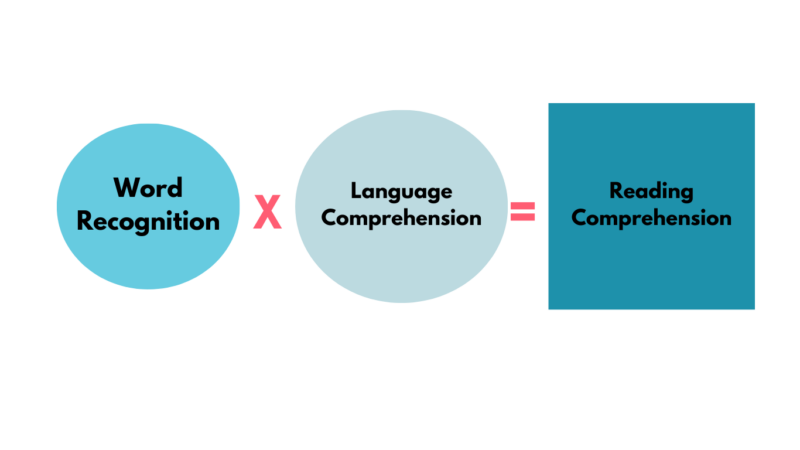
Reading Comprehension is defined as the “ability to extract and construct literal and inferred meaning” from print (Hoover & Tunmer, 2018).
Word Recognition is defined as the “ability to recognize printed words accurately and quickly to efficiently gain access to the appropriate word meanings” (Hoover & Tunmer, 2018). Some articles call this decoding.
Language Comprehension is defined as the “ability to extract and construct literal and inferred meaning” (Hoover & Tunmer, 2018) from speech.
Simply put: Reading comprehension is a product of both word recognition and language comprehension.
So it tells us that:
“The simple view does not deny that the reading process is complex” (Hoover & Gough, 1990). Rather it gives us an aerial view of reading. Word recognition and language comprehension have equal importance to arriving at skilled reading. You can’t have one without the other. Because strong skills in both areas are needed to achieve strong reading comprehension, it helps us approach different reading difficulties that can come in three different ways.
So let’s put some numbers to this simple view of reading formula:
Let’s say you have a student with decent skills in language comprehension (1) but lacking in decoding or word recognition (0).
0 x 1 = 0 for reading comprehension
Maybe another student has strong language comprehension skills (1) but weak word recognition (.3)
.3 x 1=0.3 for reading comprehension
Or the flip side where a student has strong word recognition skills (1), but weaker in the area of language comprehension (.5)
1 x .5=0.5 for reading comprehension
So for students strong in one area but weak in the other, their reading comprehension will only be as strong as their weakest area.
Then if you have a student weaker in both areas say (.5) in word recognition and (.75) in language comprehension, their overall reading comprehension ability is lower than both these areas.
.5 x .75 =0.375 for reading comprehension
How It Helps Define Reading Difficulties
If we dig a little deeper with this formula, it helps define readers in 4 general categories. You might have a child who fits into a category for a short time, before getting to the skilled reader. These are not permanent or again trying to deny the complexities that go into reading.
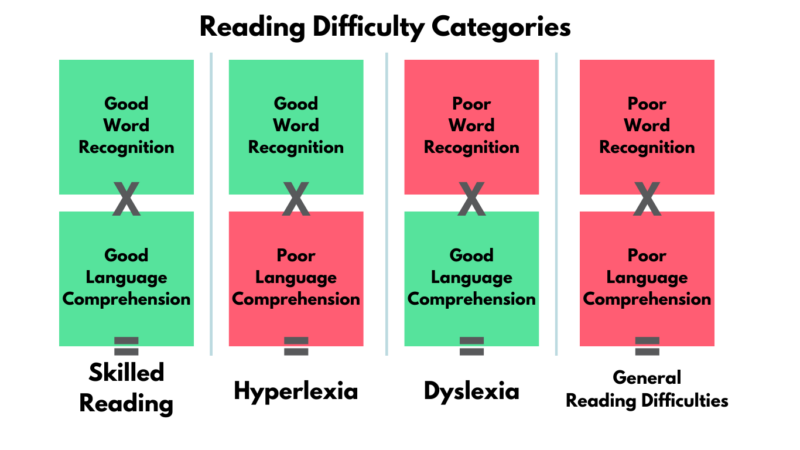
Good word recognition & language comprehension are your skilled readers or readers well on their way to being skilled readers.
Good word recognition and poor language comprehension are students with hyperlexia. Students who are aware of letters, know words, and can read, but cannot arrive at the meaning. This could also for a short time be students who are limited in vocabulary or their understanding of the world as they don’t have much background knowledge to connect to what they can decode.
Poor word recognition with good language comprehension are students who are poor decoders. This category is where students with dyslexia fall. Also could be students who weren’t exposed to the letters and letter sounds until kindergarten so they are catching up on these skills.
Poor word recognition and poor language comprehension are our struggling readers and many different factors are impacting these two areas.
Key Takeaways for Teachers
With the big picture view Simple View of Reading provides, it allows teachers to:
- Focus on what’s most important to develop students’ reading skills
- Help find assessments and instructional routines to help meet the reading needs of their students
- Simplifies reading difficulties (which might not be true for some) but helps give overall area to focus on
- Provides focus on interventions to use because know the areas struggling in.
- Better equips teachers with information to share with parents on their child’s reading ability as it makes reading appear not so complex
Key Takeaways for Parents
With the big picture view, the Simple View of Reading provides, it allows parents to:
- Focus on what’s most important to developing your child’s reading skills
- Ability to ask a teacher what area your child is strong or weak in no matter how reading is taught at that school
- Makes reading and talking about reading a bit more approachable
- Helps give you an area to help your child besides the common suggestion to just read with them or to them
Summing It Up
Yes, the Simple View of Reading can appear simple or it glosses over the fact that so much goes into the ability to read. However, it is a formula that has been proven over and over again in the last 30 years, that word recognition and language comprehension are the areas with the biggest impact on reading comprehension or what so many of us consider skilled reading. Knowing the ability level a student has in both areas can greatly impact how we can help them with their reading and offer suggestions to their families to support them.
Simple View Overview
As a way to sum all of this up, I put together a printable summary of the Simple View of Reading for you to reference or share with other teachers and parents. I truly believe this is something that can have a huge impact on our teaching, but also the overall conversations we have about reading within our classrooms.
With these posts on the science of reading, I’m striving to not just share just because of a training I took, but also provide the resources and sources to back up this information. Below are the articles I cited or referenced so you have easy access to them if needed:
- Gough, P. B., & Tunmer, W. E. (1986). Decoding, Reading, and Reading Disability. Remedial and Special Education, 7(1), 6-10. https://doi.org/10.1177/074193258600700104
- Hoover, W.A . & Gough, P.B. (1990) The Simple View of Reading. Reading and Writing, January 1990 https://www.researchgate.net/publication/225973881_The_Simple_View_of_Reading
- Hoover, W. A., & Tunmer, W. E. (2018). The Simple View of Reading: Three Assessments of Its Adequacy. Remedial and Special Education, 39(5), 304-312. https://doi.org/10.1177/0741932518773154
- Hoover, W. A., & Tunmer, W.E. (2021). A Commentary on Some Recent Claims Made Against the Simple View of Reading. Reading Research Quarterly, 57(2) 399-408 https://www.researchgate.net/publication/359246057_A_commentary_on_some_recent_claims_made_against_the_Simple_View_of_Reading

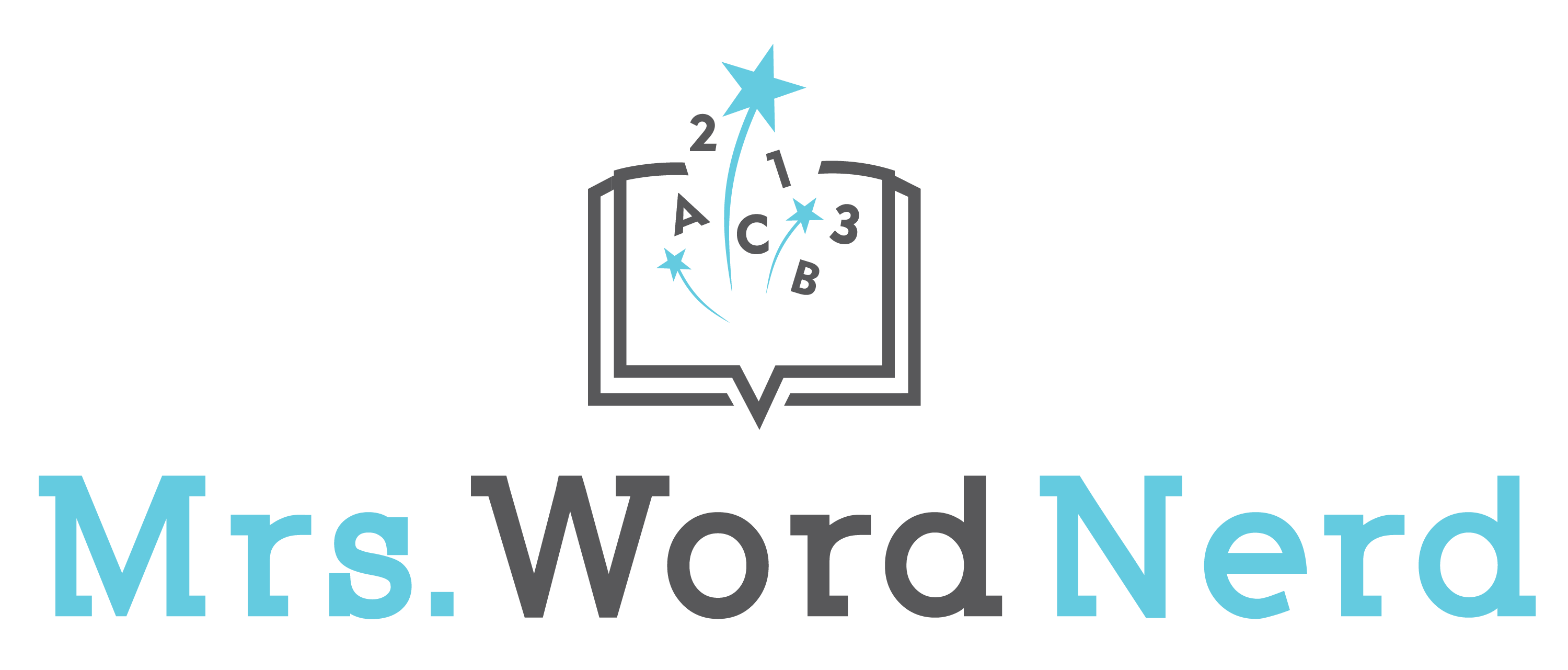
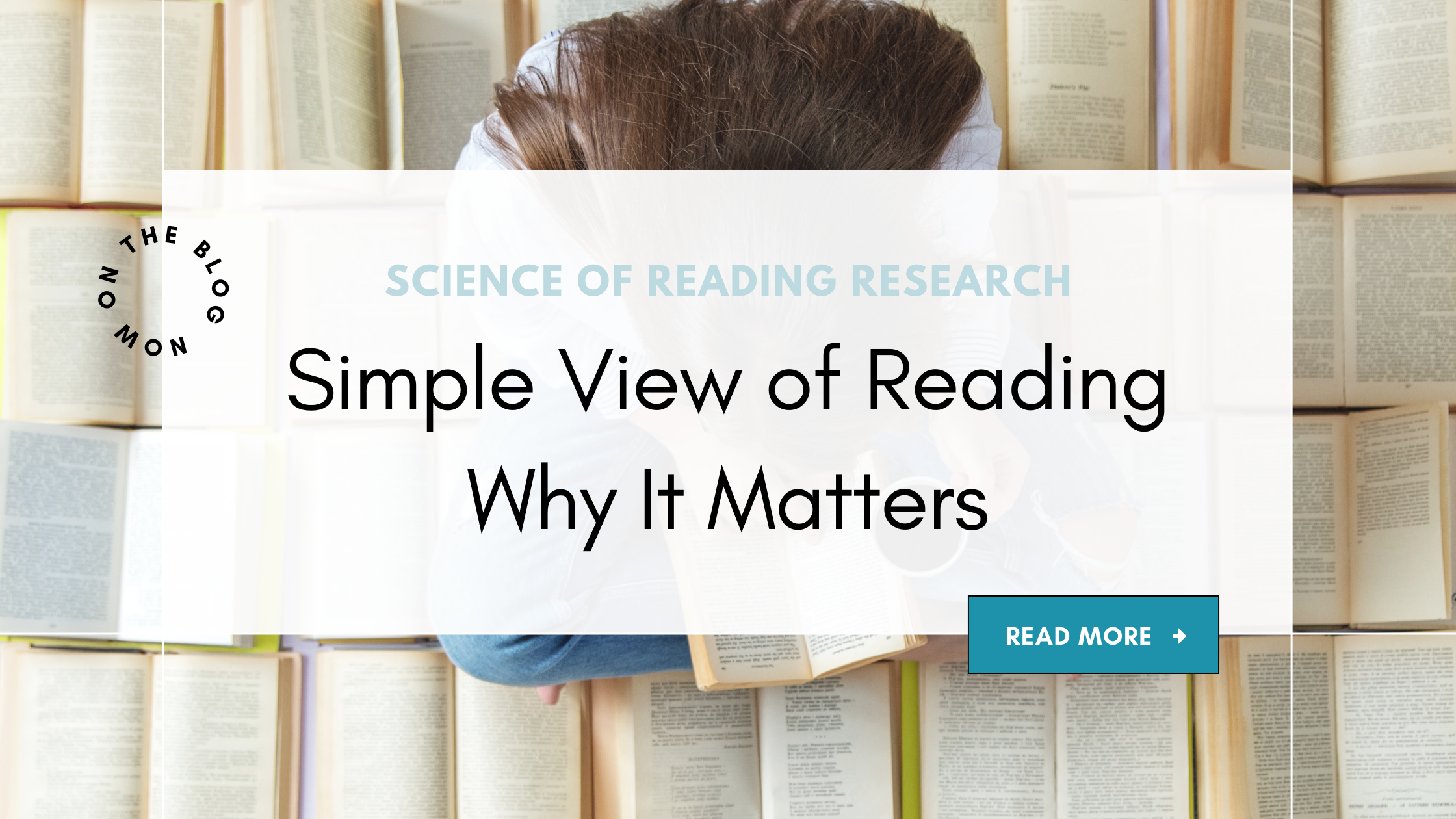
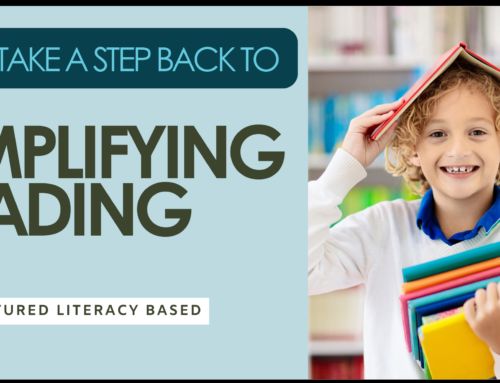

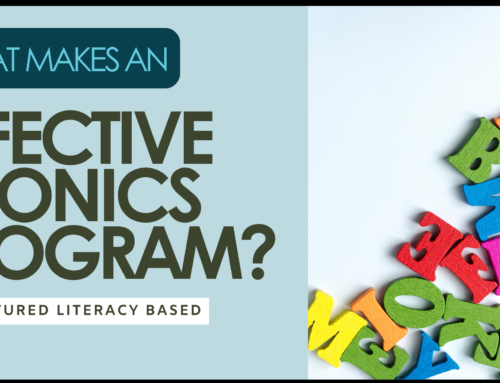
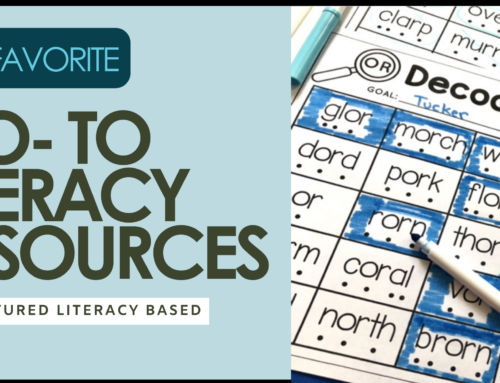
Leave A Comment